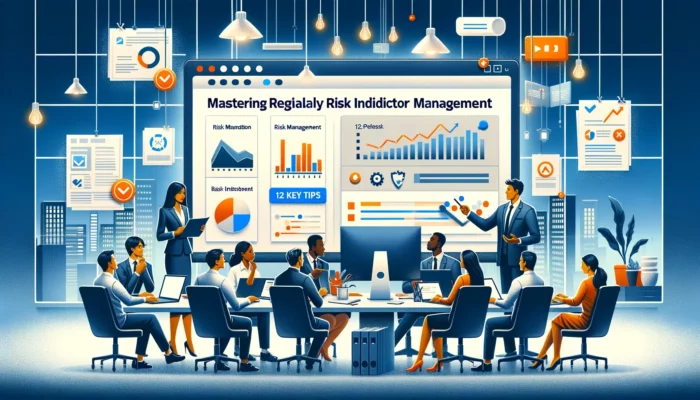An Executive Summary for a Business Continuity Plan (BCP) is a concise overview of the entire plan, providing a snapshot of its key components and objectives.
It is designed to give readers, especially senior management and stakeholders, a quick understanding of the main strategies and procedures in place to ensure that the organization can continue to operate in the face of disruption. The Executive Summary typically includes:
- Purpose of the Plan: A brief statement about the reason for the BCP and its importance to the organization’s resilience.
- Scope: Outlines the parts of the organization covered by the BCP, including which functions, locations, and assets are prioritized.
- Key Elements: Highlights the critical components of the plan, such as the business impact analysis, risk assessment, and continuity strategies.
- Roles and Responsibilities: Summarizes who executes the BCP, including the crisis management team and their duties.
- Response Procedures: Provides an overview of the organization’s steps in response to different types of incidents.
- Recovery Strategies: Briefly describe the approaches for resuming business operations at an acceptable level after a disruption.
- Training and Testing: Mentions the plan for training employees on BCP procedures and the schedule for testing and maintaining the plan.
The Executive Summary should be clear, concise, and accessible, allowing readers to quickly grasp the essence of the BCP without having to delve into the full document.
In today’s fast-paced and unpredictable business landscape, having a robust Business Continuity Plan (BCP) is not just a good idea but a necessity.

It serves as a lifeline for organizations, enabling them to navigate through crises, disruptions, and unforeseen events.
However, simply having a BCP in place is not enough. Executives play a pivotal role in ensuring its effective implementation. But what exactly does an executive need to know about a BCP? How can they contribute to its success?
The executive summary will shed light on these questions and highlight the key elements, benefits, and steps involved in developing a comprehensive BCP.
Stay tuned to discover how your role as an executive can help safeguard your organization’s resilience and success.
Key Takeaways
- Business Continuity Plan ensures continuity of operations and quick recovery from disruptive events.
- Continuity safeguards an organization’s resilience, protects employees, and enables effective management of procedures.
- A robust BCP minimizes disruptions, identifies potential risks, and establishes access to critical suppliers.
- Executives play a crucial role in providing leadership, involving stakeholders, and aligning BCP with the organization’s goals.
Importance of a Business Continuity Plan
A business continuity plan is crucial for organizations as it ensures the continuity of operations during unforeseen disruptions.
It plays a significant role in safeguarding the organization’s resilience and ability to recover quickly from any disruptive event.
Significance of Continuity
The importance of a Business Continuity Plan lies in its ability to ensure the uninterrupted operation and resilience of a company in the face of unforeseen disruptions or crises.
This plan plays a crucial role in maintaining business operations, protecting employees, and enabling effective management of procedures.
Ensuring Business Resilience
To ensure the resilience of a business, a well-designed Business Continuity Plan is essential. Business continuity plans involve conducting business impact analysis, identifying potential threats, and assessing risks.
Senior management plays a crucial role in overseeing the development and implementation of the plan.
Operational assessments are conducted to identify critical functions and prioritize resources. Regular simulations and exercises help in testing the plan’s effectiveness.
Effective communication strategies are also crucial in minimizing service disruptions during a crisis.
Safeguarding Operations Effectively
Safeguarding operations effectively requires the implementation of a robust Business Continuity Plan, which is vital for minimizing disruptions and ensuring the continuity of essential business functions during times of crisis.
To achieve this, organizations should consider the following:
- Identifying potential events that may cause business disruptions.
- Developing mitigation strategies to address risks to business processes, staff, and facility.
- Establishing prompt access to critical suppliers and implementing effective crisis management protocols.
Key Elements of a BCP
The key elements of a Business Continuity Plan (BCP) include:
- The plan development process:
- Identifying critical business functions.
- Establishing recovery objectives.
- Creating action plans.
- Risk assessment strategies:
- Identifying potential threats and vulnerabilities.
- Allowing for effective mitigation measures.
- Communication protocols:
- Ensuring clear and timely dissemination of information to all stakeholders during a crisis.
These elements are essential for a comprehensive and effective BCP.
Plan Development Process
Developing a comprehensive Business Continuity Plan (BCP) involves identifying and integrating key elements that ensure operational resilience in the face of disruptions. The plan development process includes the following steps:
- Conduct Business Impact Analysis (BIA): This involves assessing the potential impact of disruptions on various aspects of the business, such as products, services, and regulatory reporting.
- Develop Recovery Strategies: Based on the BIA results, strategies are developed to mitigate risks and ensure business continuity during incidents like power outages or phone system failures.
- Document and Test the Plan: The BCP should be documented and regularly tested to ensure its effectiveness. It is an ongoing process that requires continuous improvement and adaptation to changing circumstances.
Risk Assessment Strategies
To effectively assess and manage risks within a Business Continuity Plan (BCP), organizations must employ robust risk assessment strategies that identify vulnerabilities and prioritize mitigation efforts.
These strategies are an integral part of the business continuity planning process.
Risk assessment strategies involve conducting impact assessments, analyzing threat scenarios, and making informed decisions on mitigation measures.
Additionally, organizations should implement crisis communication protocols and conduct workplace simulations to ensure the smooth continuation of critical business functions and minimize the potential for business interruption.

Communication Protocols
Effective communication protocols are essential key elements of a Business Continuity Plan (BCP) to ensure seamless coordination and information dissemination during a crisis or disruption.
To establish effective communication protocols, businesses should consider the following:
- Identify primary and alternate communication channels to minimize service interruption.
- Define communication procedures to maintain normal operations across different physical locations.
- Ensure compliance with regulatory requirements and establish communication channels for all critical business functions, business premises, and business units.
Executives’ Role in BCP Implementation
Executives play a crucial role in the successful implementation of a Business Continuity Plan (BCP). They have the responsibility of providing leadership and support throughout the process, ensuring that all relevant stakeholders are involved and informed.
Executives also need to develop an effective BCP implementation strategy that aligns with the organization’s goals and objectives, taking into consideration the unique challenges and requirements of the business.
Executives’ Responsibilities
As key stakeholders in the Business Continuity Plan (BCP) implementation, executives play a crucial role in ensuring the seamless continuity of business operations during unforeseen disruptions. Their responsibilities include:
- Leading the development and implementation of the BCP, ensuring alignment with critical business activities and key business processes.
- Establishing a crisis management team to oversee risk management and disaster management activities.
- Providing guidance and support in event response, including the coordination of operational procedures and allocation of necessary resources, such as human resources.
BCP Implementation Strategy
The successful implementation of the Business Continuity Plan relies heavily on the active involvement and leadership of executives within the organization. Executives play a crucial role in driving the BCP implementation strategy. They should ensure that the business continuity plan template is followed, especially during the business continuity planning stage.
Executives should adopt a multi-tiered risk management approach, identify critical business processes, assess the impact of crisis events, establish alternate communications, allocate financial resources, and conduct a comprehensive business impact analysis (BIA) to implement the BCP effectively.
Benefits of a Comprehensive BCP
A comprehensive Business Continuity Plan (BCP) offers numerous benefits to an organization.
Firstly, it ensures the continuity of critical business operations during disruptive events, minimizing downtime and financial losses.
Secondly, a BCP helps identify and mitigate potential risks, allowing companies to address vulnerabilities and enhance their overall resilience proactively.
Lastly, a comprehensive BCP instills confidence in stakeholders, including customers, employees, and investors, demonstrating the organization’s commitment to preparedness and its ability to navigate through crises effectively.
Importance of BCP
Implementing a comprehensive Business Continuity Plan (BCP) brings numerous benefits to organizations, ensuring their resilience and ability to withstand disruptions.
The importance of a BCP lies in its ability to safeguard critical business segments, maintain uninterrupted business activities, and protect business objectives.
A well-designed BCP also helps retain business customers during unexpected events, minimizes the impact of business disruptions, saves management time, and ensures the availability of key staff when needed.
Risk Mitigation Strategies
One of the key advantages of a comprehensive Business Continuity Plan (BCP) is the ability to mitigate risks and safeguard critical business operations. Risk mitigation strategies are an essential component of a BCP.
By using a business continuity planning template, organizations can identify and prioritize their critical business constituents and develop strategies to minimize the impact of business disruptions. This includes addressing external threats such as cyber threats, which are increasingly affecting even the largest organizations.
A detailed business impact analysis (BIA) and limited simulations can help organizations refine their risk mitigation strategies and ensure business continuity.
Steps to Develop an Effective BCP
Developing an effective Business Continuity Plan (BCP) involves several important steps.
The first step is planning for resilience, which includes identifying critical functions and resources, as well as developing strategies to ensure their continuity.
Risk assessment and analysis is another crucial step, involving the identification and evaluation of potential threats and vulnerabilities to the organization.
Lastly, effective communication and coordination are essential for ensuring that all stakeholders are informed and involved in the BCP development process.
Planning for Resilience
To ensure the long-term survivability of a business, it is crucial to meticulously strategize and plan for resilience in the development of an effective Business Continuity Plan (BCP).
This involves considering various factors such as the business district, business drivers, and the aim of business continuity. To address these, the BCP should include strategies that align with the business continuity aims and address potential disruptions throughout the business cycle.
Risk Assessment and Analysis
In order to develop an effective Business Continuity Plan (BCP), a thorough risk assessment and analysis must be conducted.
This entails identifying potential risks and analyzing their potential impact on business continuity. By assessing risks associated with emergencies or catastrophic events, management can develop a mitigation plan to minimize disruptions.
It is crucial to consider factors such as employee morale, the importance of key employees, and the location of employees when conducting the risk assessment and analysis.
Communication and Coordination
Effective communication and coordination are essential components in the development of a Business Continuity Plan (BCP). To ensure successful implementation, consider the following steps:
- Establish clear lines of communication: Clearly define roles and responsibilities within the organization to facilitate effective communication during business emergencies.
- Develop a communication strategy: Create a plan that outlines how information will be disseminated to employees, stakeholders, and critical businesses.
- Coordinate with relevant agencies: Collaborate with Australian emergency management agencies and the Defense Logistics Information Service to share information and resources.
Frequently Asked Questions
What Are the Potential Risks and Threats That Can Disrupt a Business’s Operations?
Potential risks and threats that can disrupt a business’s operations include natural disasters, cyberattacks, supply chain disruptions, financial crises, and pandemics. These risks can lead to downtime, loss of revenue, damage to reputation, and legal and regulatory non-compliance.
How Can a Business Identify and Prioritize Critical Functions and Processes?
In order to identify and prioritize critical functions and processes, a business can conduct a thorough analysis of its operations, considering factors such as customer impact, regulatory requirements, financial implications, and operational dependencies.
What Are the Recommended Communication Strategies During a Business Disruption?
Recommended communication strategies during a business disruption include establishing a designated communication team, utilizing multiple channels such as email, phone, and social media, providing regular updates to stakeholders, and ensuring the accuracy and consistency of information shared.
How Often Should a Business Review and Update Its Business Continuity Plan?
A business should regularly review and update its continuity plan to ensure its effectiveness and relevance. This periodic assessment allows for any changes in the business environment, technology, or stakeholder needs to be incorporated into the plan, maximizing its ability to mitigate disruptions.
What Are the Legal and Regulatory Requirements Related to Business Continuity Planning?
Legal and regulatory requirements related to business continuity planning vary depending on the industry and jurisdiction. Organizations must comply with relevant laws, regulations, and standards, such as data protection and privacy laws, industry-specific regulations, and requirements set by regulatory bodies.

Conclusion
A business continuity plan is necessary to ensure uninterrupted operations during unexpected disruptions.
It consists of key elements such as risk assessment, recovery strategies, and communication plans.
Executives play a vital role in implementing and supporting the BCP within their organizations.
A comprehensive BCP provides numerous benefits, including reduced downtime, increased customer confidence, and minimized financial losses.
Developing an effective BCP can help organizations handle unforeseen events.

Chris Ekai is a Risk Management expert with over 10 years of experience in the field. He has a Master’s(MSc) degree in Risk Management from University of Portsmouth and is a CPA and Finance professional. He currently works as a Content Manager at Risk Publishing, writing about Enterprise Risk Management, Business Continuity Management and Project Management.

